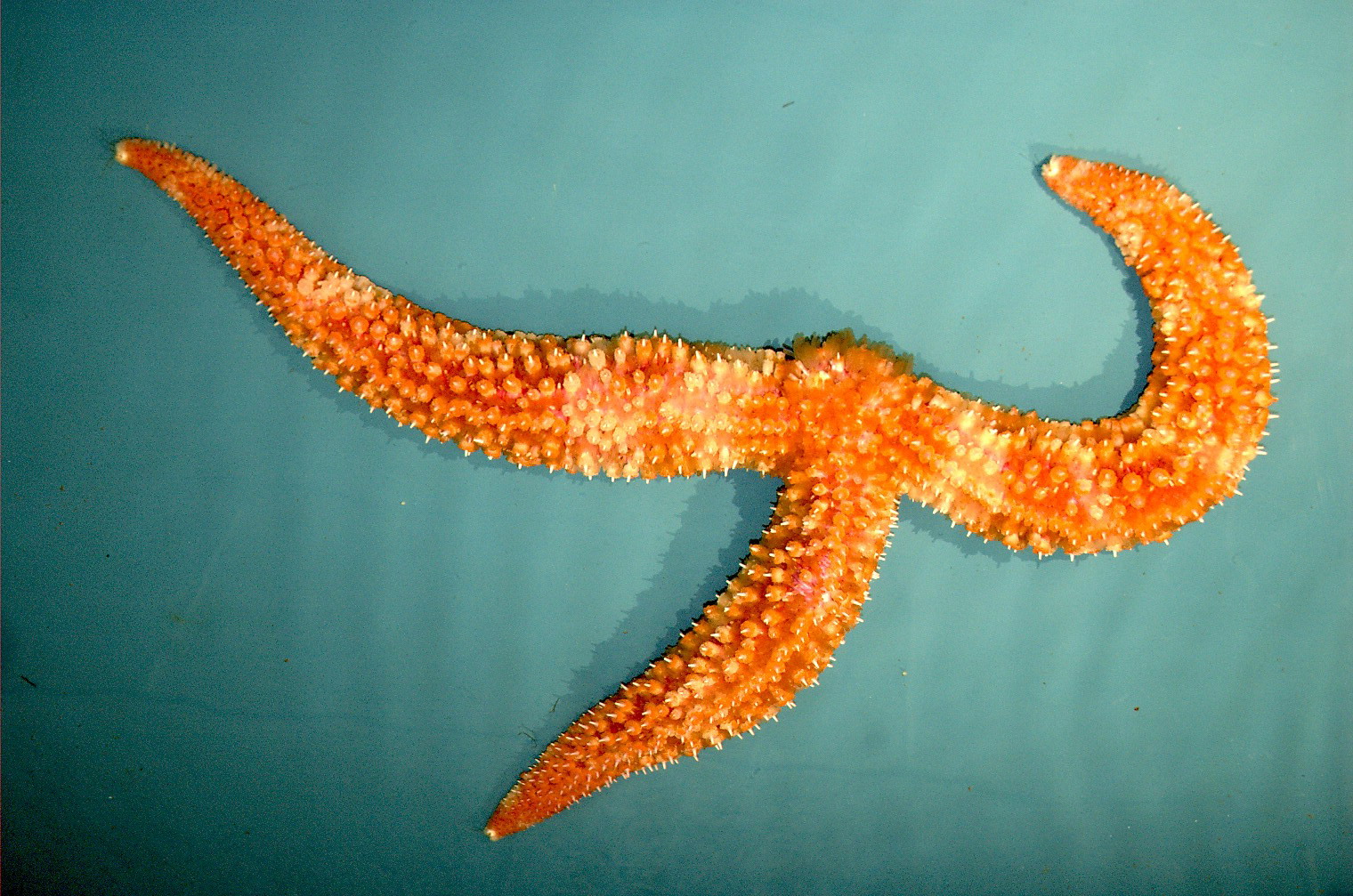How to Distinguish from Similar Species: Stylasterias forreri is similar in shape and spines but is brown, olive, or gray without red and has differences in its spines and pedicellariae. Evasterias troschelii has a generally similar body shape and variable coloration but its rays are thickest a short distance from the central disk and it does not have the pronounced series of large spines surrounded by fleshy cushions of pedicellariae.
Geographical Range: Eastern Aleutian Islands to northern Mexico.
Depth Range: Intertidal or (usually) subtidal to 283 m or more
Habitat: Rock, pebbles, sand, and mud
Biology/Natural
History:
Studies
have indicated that this species may eat a variety of prey such as
snails,
limpets, bivalves, chitons, squid, brachiopods, barnacles, crabs, fish,
and tunicates but it seems to especially eat bivalves. It can
use
its large tube feet to pull clams up out of the sediment, then chips
away
some of the margin of the shell until it can insert its stomach and
digest
the clam. Breeding occurs from June to August.
Spawning individuals
elevate themselves from the bottom on their arm tips.
Lifespan is
at least 9 years. The polychaete worm Arctonoe
fragilis is commensal on this seastar (photo).
| Return to: | |||
| Main Page | Alphabetic Index | Systematic Index | Glossary |
References:
Dichotomous Keys:Flora and Fairbanks, 1966
Kozloff 1987, 1996
Smith and Carlton, 1975
General References:
Furlong
and Pill, 1972
Gotshall
and Laurent, 1979
Harbo,
1999
Kozloff,
1993
Johnson
and Snook, 1955 (As Orthasterias columbiana)
Lambert,
2000
Lamb
and Hanby, 2005
Morris
et al., 1980
Niesen,
1997
Sept,
1999
Scientific Articles:
Knott, K. Emily, and Gregory A. Wray, 2000. Controversy and consensus
in Asteroid systematics: new insights to Ordinal and Familial
relationships. American Zoologist 40:3 pp. 382-392
Mauzey, K.P., C. Birkeland,
and P.K.
Dayton,
1968. Feeding behavior of asteroids and escape responses of
their
prey in the Puget Sound region. Ecology 49: 603-619
Web sites:
General Notes and
Observations: Locations,
abundances, unusual behaviors:
Older references such as Johnson and Snook (1955) state that this species is common intertidally. However, my experience and several more recent references confirm that now this species is much less common intertidally than subtidally.
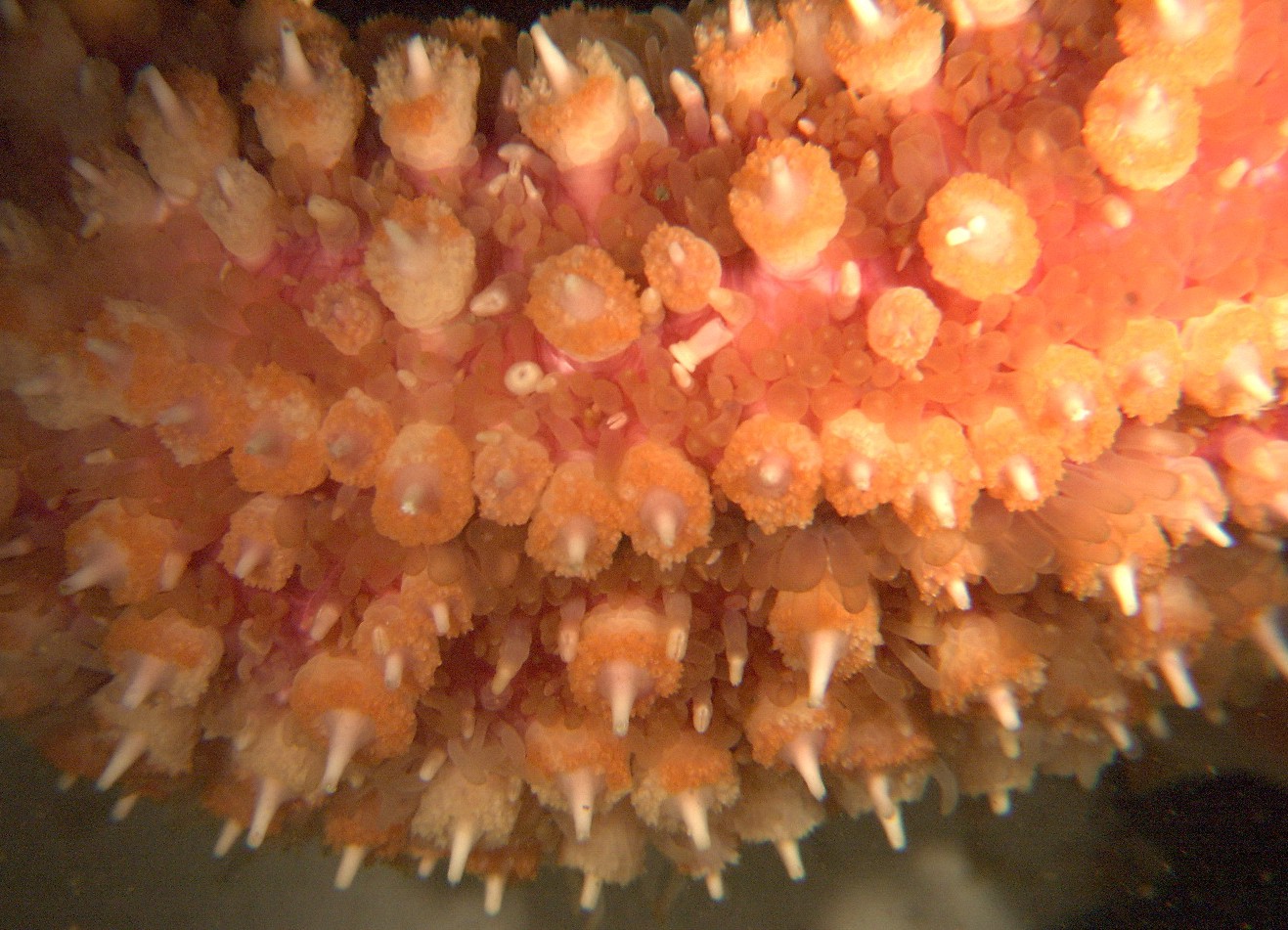
This aboral
view
(in other words, view from the top) of the ray
shows the line of large carinal spines down the aboral
surface and the ragged rows of spines on each side. Notice
the cushions
of small pedicellariae
which surround each spine. Also notice the large individual
pincer-like
pedicellariae
and the abundant papulae
between the spines. Photo by Dave Cowles, July 2008
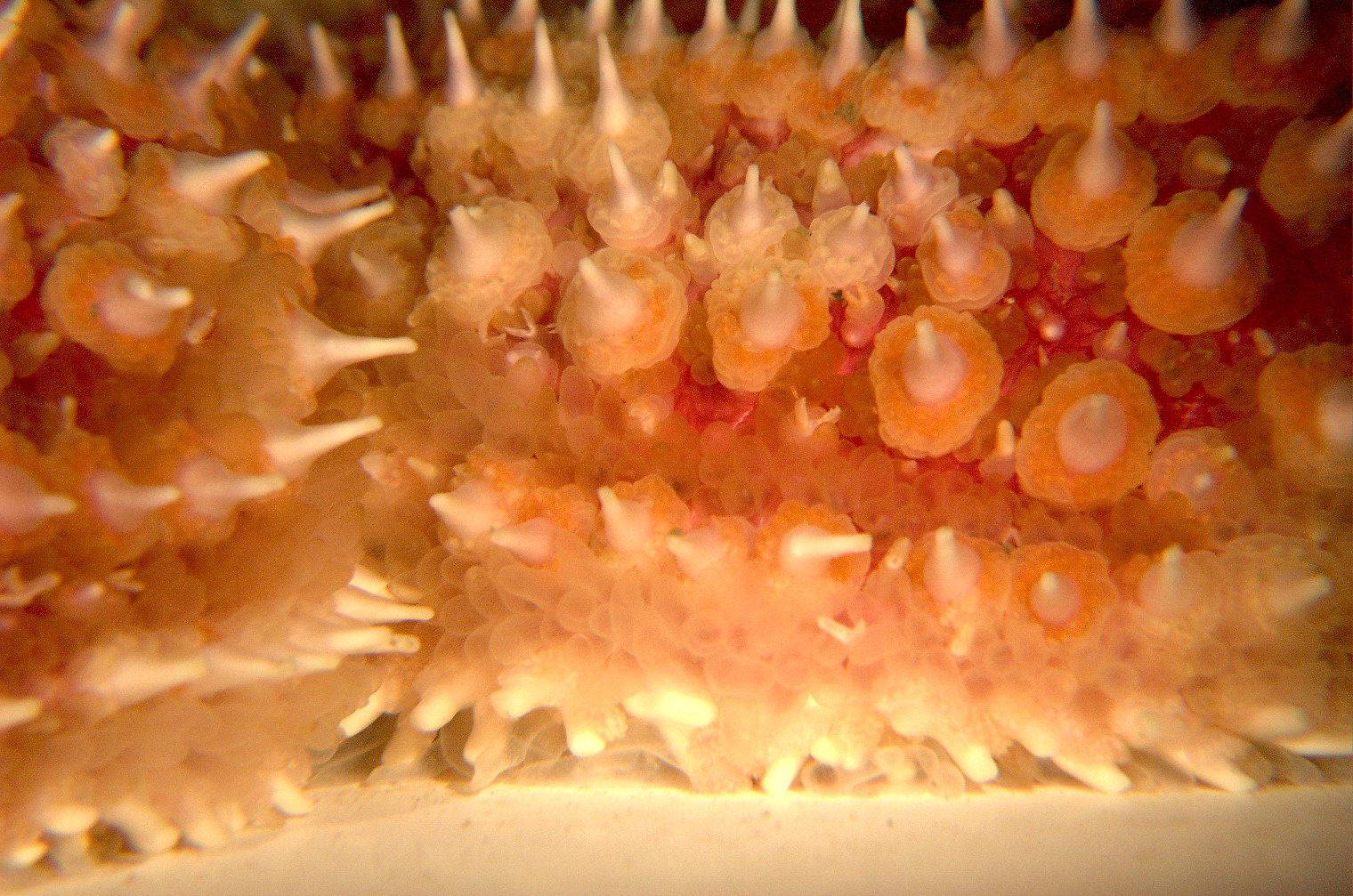
This lateral view of the rays
shows the scattered rows of spines, the abundant large pedicellariae
and papulae
among the
spines, and the rows of adambulacral spines along the bottom.
| Views of the oral (ambulacral) region of the rays. Photos by Dave Cowles, July 2008 | ||
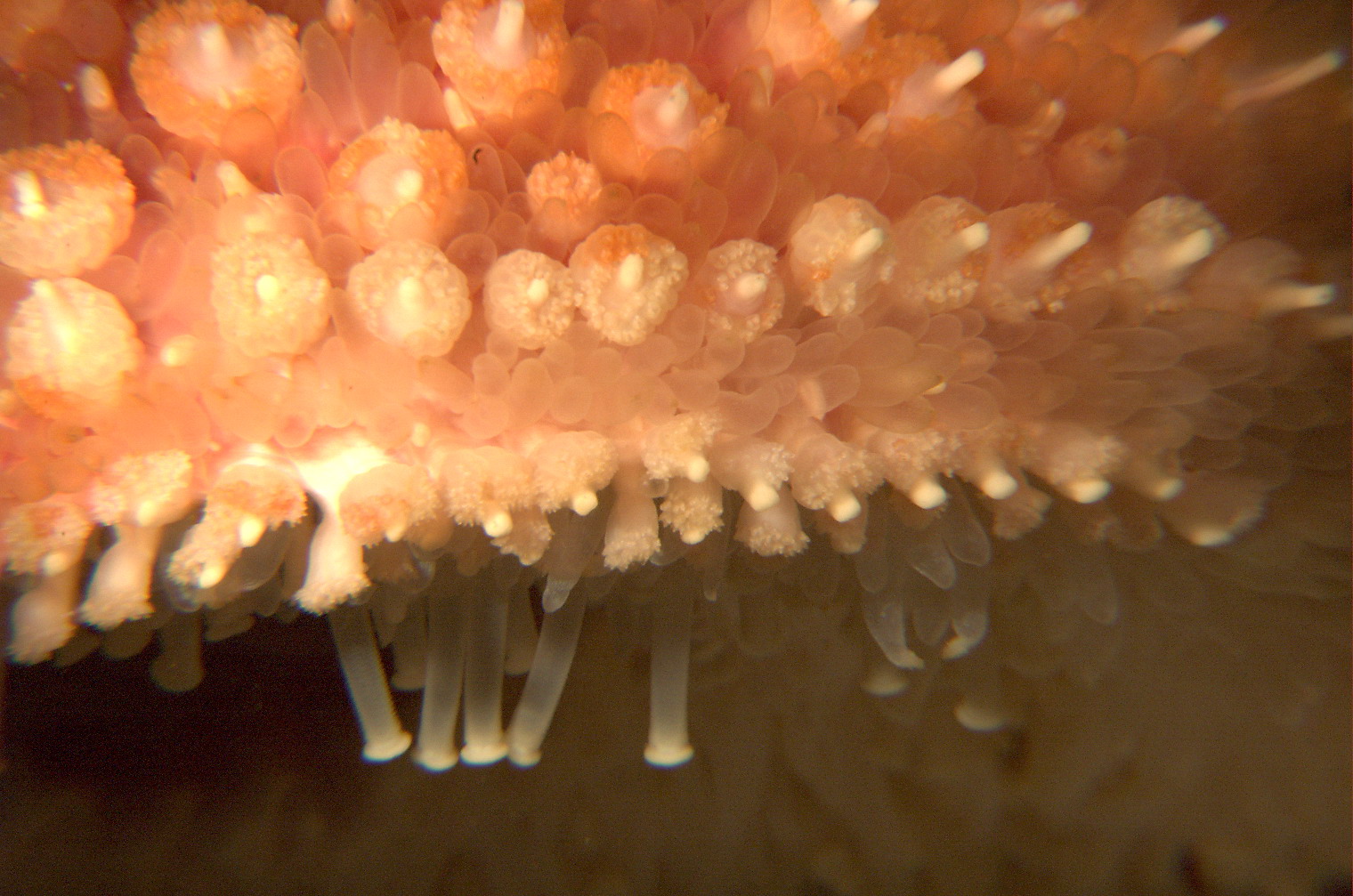 |
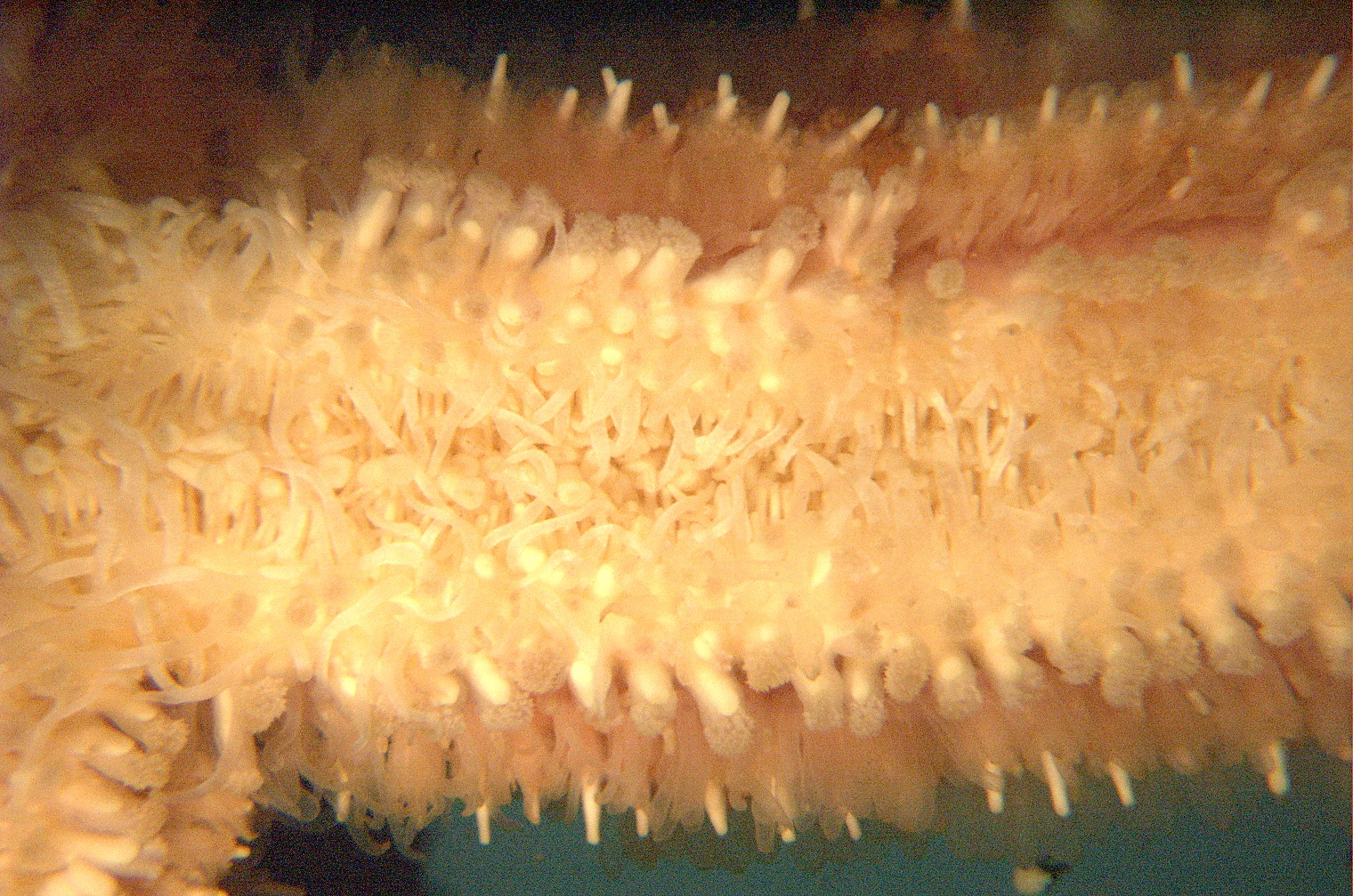 |
|
| This lateral view of the ambulacral area of the rays shows the scattered rows of ray spines surrounded by cushions of small pedicellariae along the sides of the ray. Below that is a section of prominent papulae which are largely obscuring the row of small oral intermediate spines. At the bottom of the ray can be seen the forked adambulacral spines which also have pedicellariae around them, and the tube feet are at the very bottom. | This oral (ambulacral) view of a ray shows the 4 rows of long tube feet. The forked adambulacral spines are visible along the margins of the ambulacral groove, though the tissue around the spines is so dense that the two forks look like two separate rows. The mouth plates, which are between the ambulacral groove and the adambulacral spines are apparently sunken and not visible. |
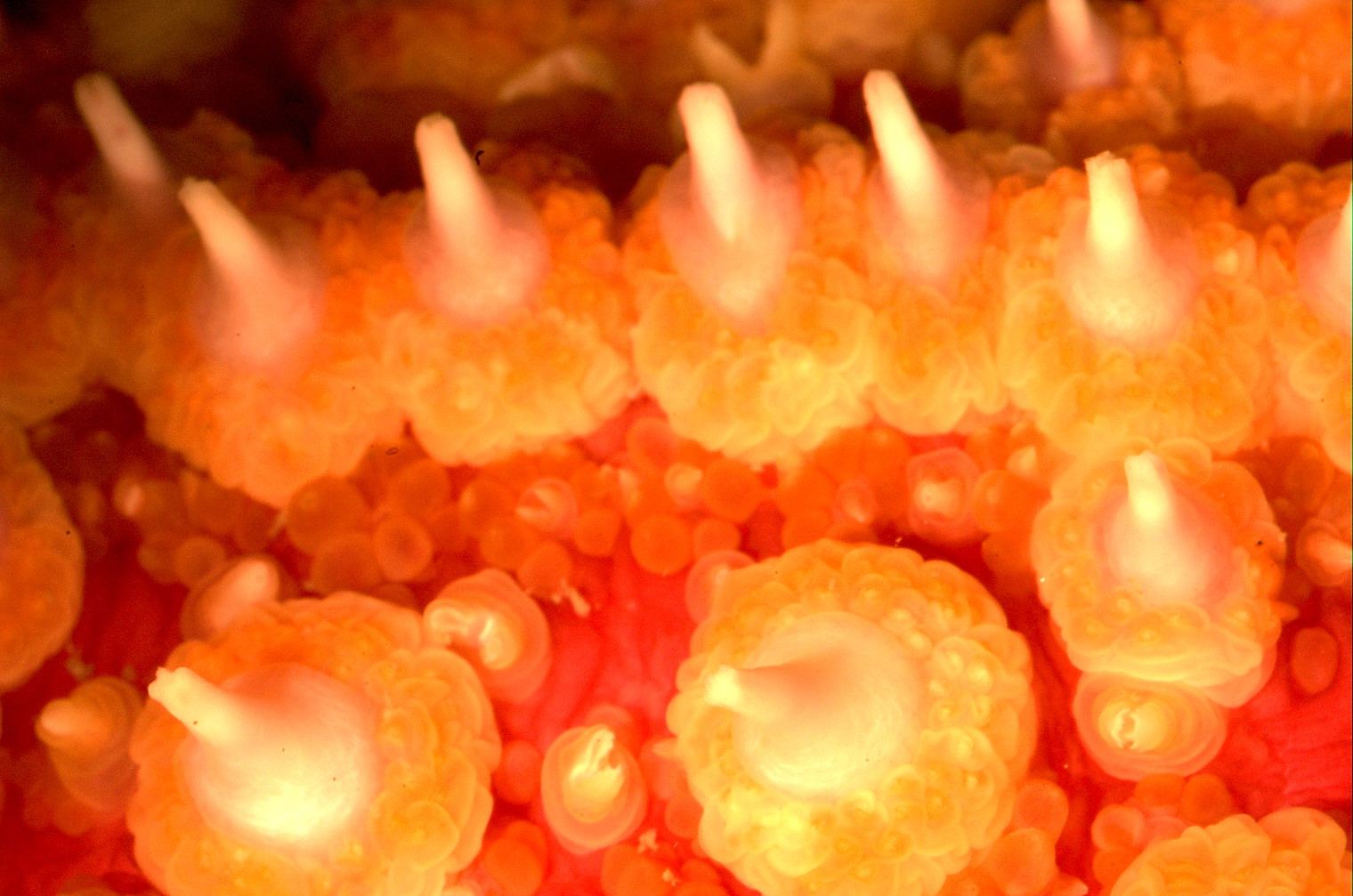
This closeup view shows the abundant pedicellariae
and papulae
among the
large spines. The small crossed pedicellariae
in the cushions around the spines are mostly retracted in this view but
a number of the individual pedicellariae
between the spines are open.
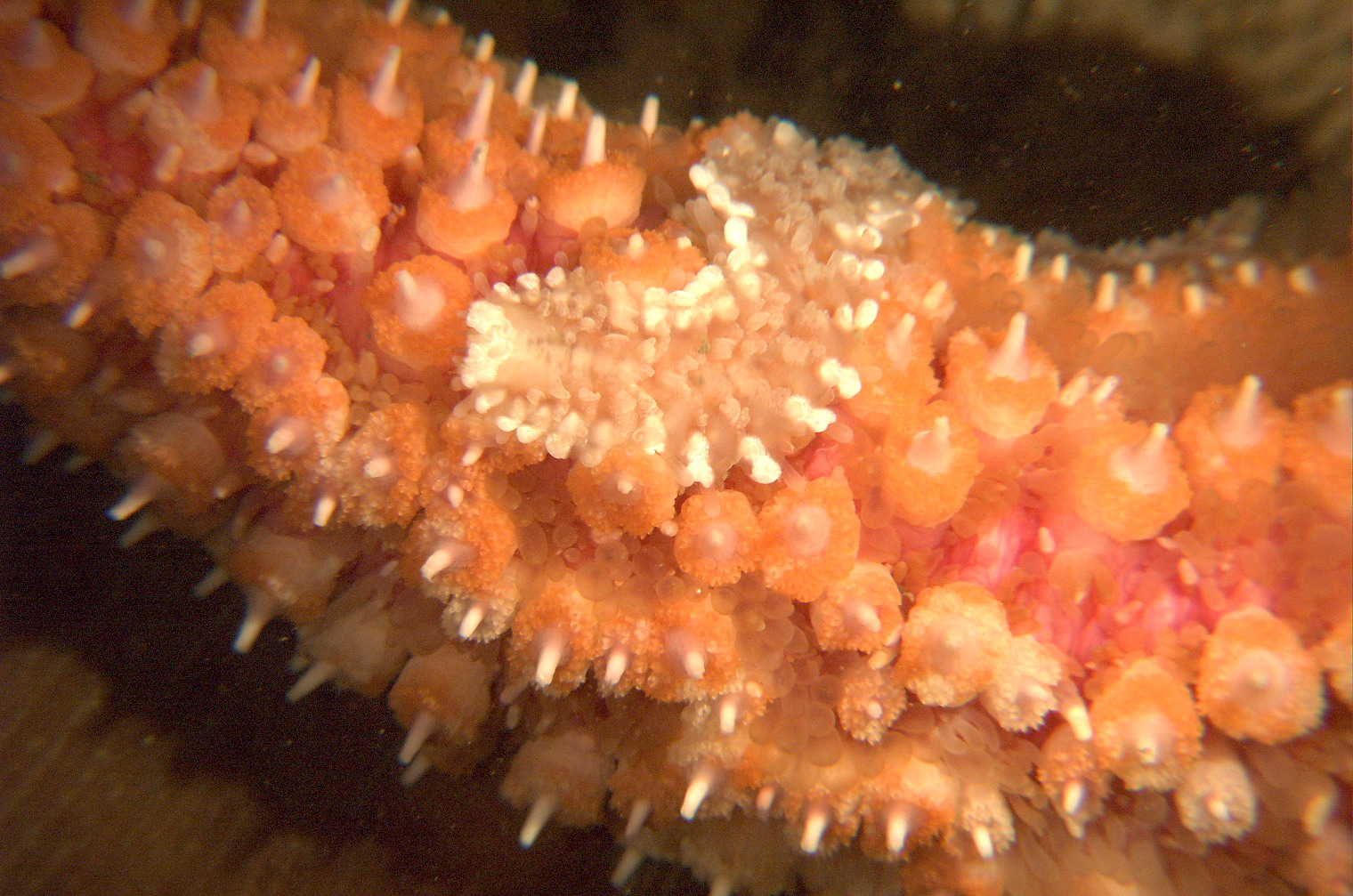
The polychaete worm Arctonoe
fragilis is often found as a commensal on this
seastar. I
cannot distinguish the dorsal plates (elytra)
on this worm but perhaps they have broken off and simply left the white
bases. The worm seems to spend the large majority of the time
on
the aboral
surface of
the rays,
even though that
is where all the large pedicellariae
are. I wonder what kind of relationship it and the seastar
have that
prevents the worm from being severely pinched?
Authors and Editors of Page:
Dave Cowles (2008): Created original page
CSS coding for page developed by Jonathan Cowles (2007)
